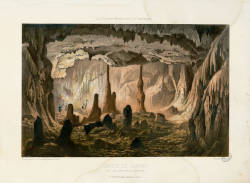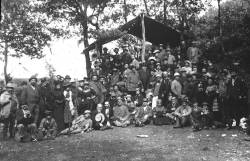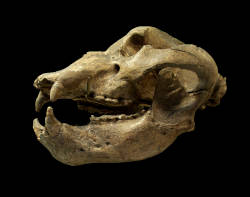Grottes Prehistorique de Gargas
Useful Information



| Location: |
Gargas, Near Aventignan.
A64 exit Montréjeau (No. 17), D71 towards Mazères-de-Neste, at Aventignan towards Saint-Bertrand de Comminges, follow signs to the caves. (43.05531682861275, 0.5361466035700995) |
| Open: |
MAY to JUN daily 10:30-17:30. JUL to AUG daily 10-18. SEP to APR Tue-Sun, Hol 10:30-17:30. Closed 25-DEC, 01-JAN. Number of visitors limited, reservation highly recommended. Reservation for groups required. [2021] |
| Fee: |
Grottes de Gargas:
Adults EUR 12.50, Children (6-16) EUR 7.50, Children (0-5) free, Students EUR 18, Disable EUR 10, Unemployed EUR 10, Family (2+2) EUR 33. Groups (10+): Adults EUR 10, Children (6-16) EUR 4.80. Nestplori@: Adults EUR 8, Children (6-16) EUR 5, Children (0-5) free, Students EUR 6.50, Disable EUR 6.50, Unemployed EUR 6.50, Family (2+2) EUR 22. Groups (10+): Adults EUR 5.50, Children (4-16) EUR 3.50. Both: Adults EUR 12, Children (4-16) EUR 7, Children (0-3) free, Family (2+2) EUR 32. [2021] |
| Classification: |
 Karst Cave Karst Cave
 Painted Cave Painted Cave
|
| Light: |
 Incandescent Incandescent
|
| Dimension: | T=11 °C |
| Guided tours: | D=30 min. |
| Photography: | |
| Accessibility: | |
| Bibliography: | |
| Address: |
Prehistoric caves of Gargas / Nestplori@, Route départementale 261, 65660 Aventignan, Tel: +33-562-98-81-50.
E-mail: Reservations, Tel: +33-562-98-81-50. |
| As far as we know this information was accurate when it was published (see years in brackets), but may have changed since then. Please check rates and details directly with the companies in question if you need more recent info. |
|
History
| 1575 | first written description by François de Belleforest. |
| 11-JUN-1906 | hand print discovered by Félix Régnault. |
| 09-APR-1910 | declared a monument historique. |
| 1950 | opened to the public. |
| 1973-1976 | complete survey of all paintings by Claude Barrière and his students at the Université de Toulouse. |
| 1986-1988 | inventory of hands by Marc Groënen. |
| 1992 | environmental study because of algae and moss. |
| 1996 | studies recommend renovation of light and reorganisation of tour. |
| 2002 | start of redesign according to the plan of architect Olivier Naviglio. |
| 2010 | Centre Numérique et Préhistorique de Gargas opened. |
Description



The Grottes Prehistorique de Gargas (prehistoric cave of Gargas) is famous for hundreds of enigmatic negatives of hands. About 250 hands were created using a simple technique: put your hand on the rock and spray colour on it. After you remove the hand, there will be a coloured spot with the negative of your hand. Spraying is easy, just take a swallow of paint into your mouth and spray. The used pigments were red ochre and black charcoal.
So the enigma is not how the hands were created, the true enigma is why were they created. And if it is so simple to make them, why are there only 250? 250 hands in 15,000 years equals one hand per 60 years, which equals three or four generations. And why do most of the hands miss one or more fingers, were they really missing or just bent for the spraying? And if they were bent, why? There are dozens of explanations, but all of them share one thing: we actually do not know the reasons and there is no way to find out. Some think they are a result of ritual mutilation, others think they are some kind of code, but probably its just a joke.
C-14 dating was used to date some of the hands. The oldest found is 27,000 years old, the youngest 15,000 years old.
There are more paintings in the cave, of deer, antelope, bison, ibex, mammoth, and horse. And of course there are engravings, tools, and animal bones which were archaeologically excavated. Around the hands, pieces of bones were stuck into cracks in the wall.
This cave is open since prehistoric times and was frequented almost continually. There are two huge entrance portals on the hillside facing north-northwest. The lower is the entrance to the broad and low Gargas I, the upper to the narrow and slender Gargas II. Both caves are connected by a passage which is blocked by a collapse. There is an early description from the 16th century, and numerous graffities of visitors. During the 19th century the first serious explorations were made, mostly by Félix Régnault, who made numerous excavations and discovered remains of man, bone of the cave bear, bones of cave hyena, and much more. His findings are on display in the natural history museums of Paris and Toulouse. But he knew the cave for 30 years when he first discovered the hands on 11-JUN-1906. He intensified his exploration and made an inventory of those paintings.
After some finds of algae and moss in 1992 the cave was intensively studies by different organizations. Their result was clear: the light system had to be renovated and the tours reorganized. After ten years of studying and planning the work started in 2002. The cave is now completely renovated, the light bulbs are replaced by low energy lamps and led lamps. The trail is new, a bridge elevated from the floor made of environment friendly material. In 2010 the Centre Numérique et Préhistorique de Gargas was opened to the public. This seems to be a renovated museum making a lot of use of computers and interactive displays.
- See also
 Search DuckDuckGo for "Grottes Prehistorique de Gargas"
Search DuckDuckGo for "Grottes Prehistorique de Gargas" Google Earth Placemark
Google Earth Placemark Grottes de Gargas - Wikipédia (visited: 07-MAR-2011) (
Grottes de Gargas - Wikipédia (visited: 07-MAR-2011) ( )
) Les grottes préhistoriques de Gargas, official website
Les grottes préhistoriques de Gargas, official website  (visited: 16-JUN-2021)
(visited: 16-JUN-2021) Gargas, Hautes-Pyrenées, F (visited: 28-JUL-2011) by Franz Lindenmayr. (
Gargas, Hautes-Pyrenées, F (visited: 28-JUL-2011) by Franz Lindenmayr. ( )
) Grottes de Gargas - Gouffre d’Esparros | Partance - Tourisme | Tourisme Sud-Ouest | Aquitaine OnLine (visited: 07-MAR-2011) (
Grottes de Gargas - Gouffre d’Esparros | Partance - Tourisme | Tourisme Sud-Ouest | Aquitaine OnLine (visited: 07-MAR-2011) ( )
) La grotte de Gargas (visited: 07-MAR-2011) (
La grotte de Gargas (visited: 07-MAR-2011) ( )
)
 Index
Index Topics
Topics Hierarchical
Hierarchical Countries
Countries Maps
Maps